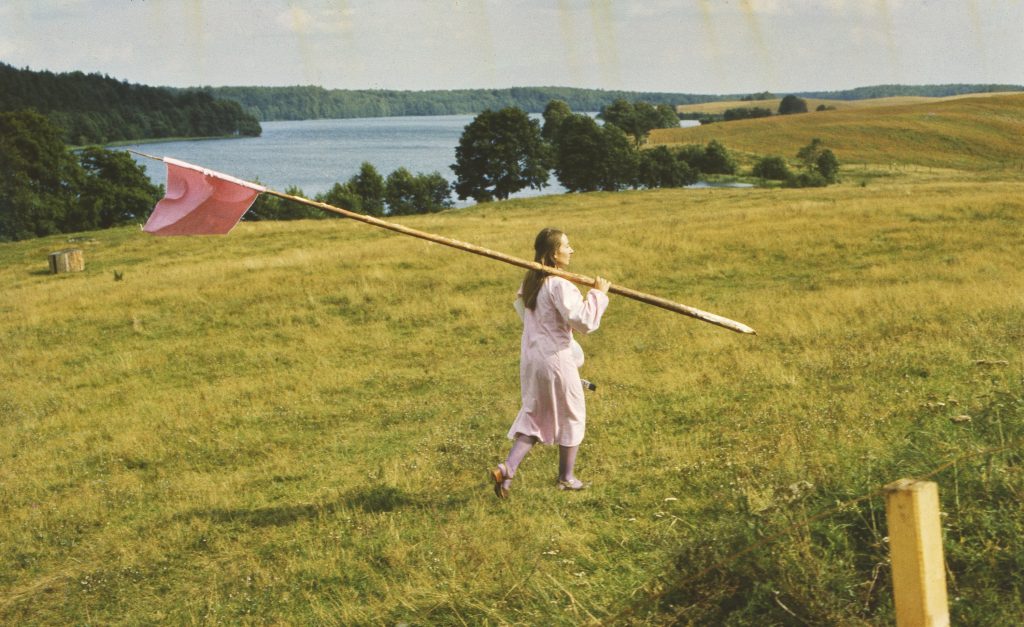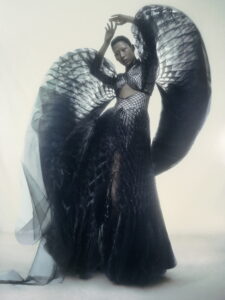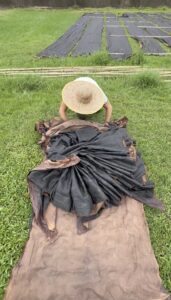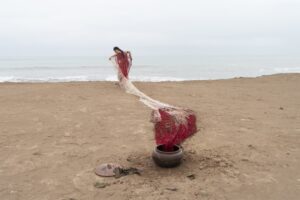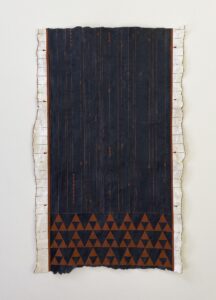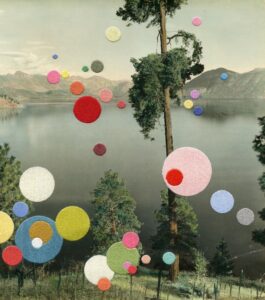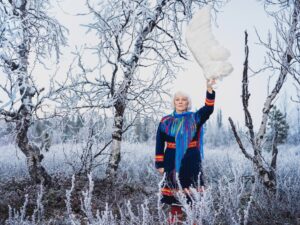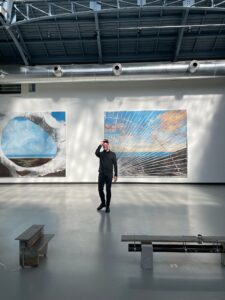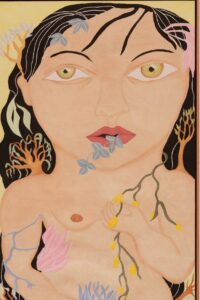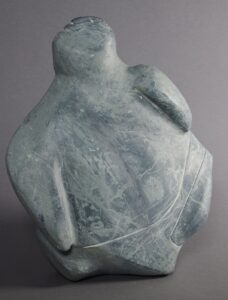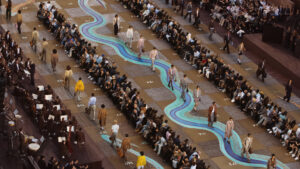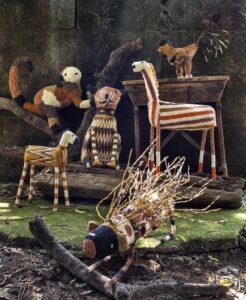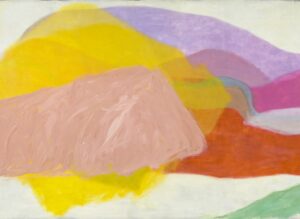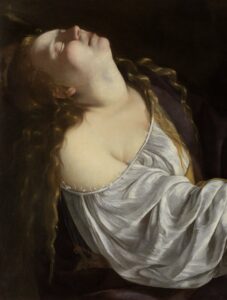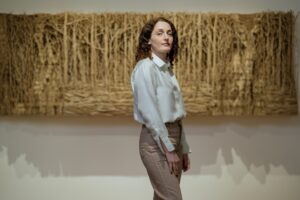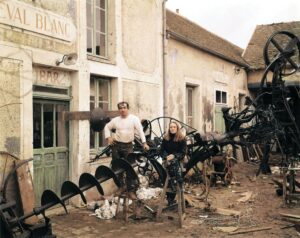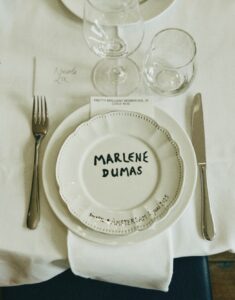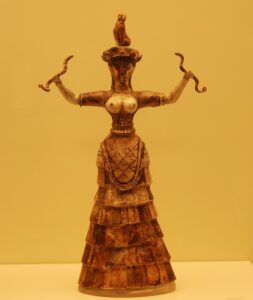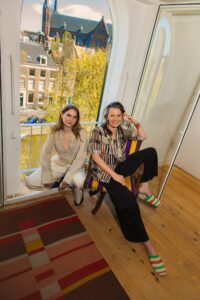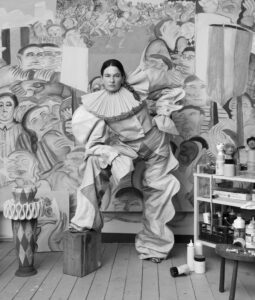Britta Marakatt-Labba
Pretty Brilliant Women in the Arts
For generations, the story of art has been told through a singular lens. When the first editions of canonical texts like Janson’s History of Art and Gombrich’s The Story of Art were published, they featured zero women artists. The Pretty Brilliant: Women in the Arts series aims to make whole what has long been a one-sided story. In these issues, featuring 583 artists, we celebrate women who have always been creating, innovating, and inspiring, like Britta Marakatt-Labba.
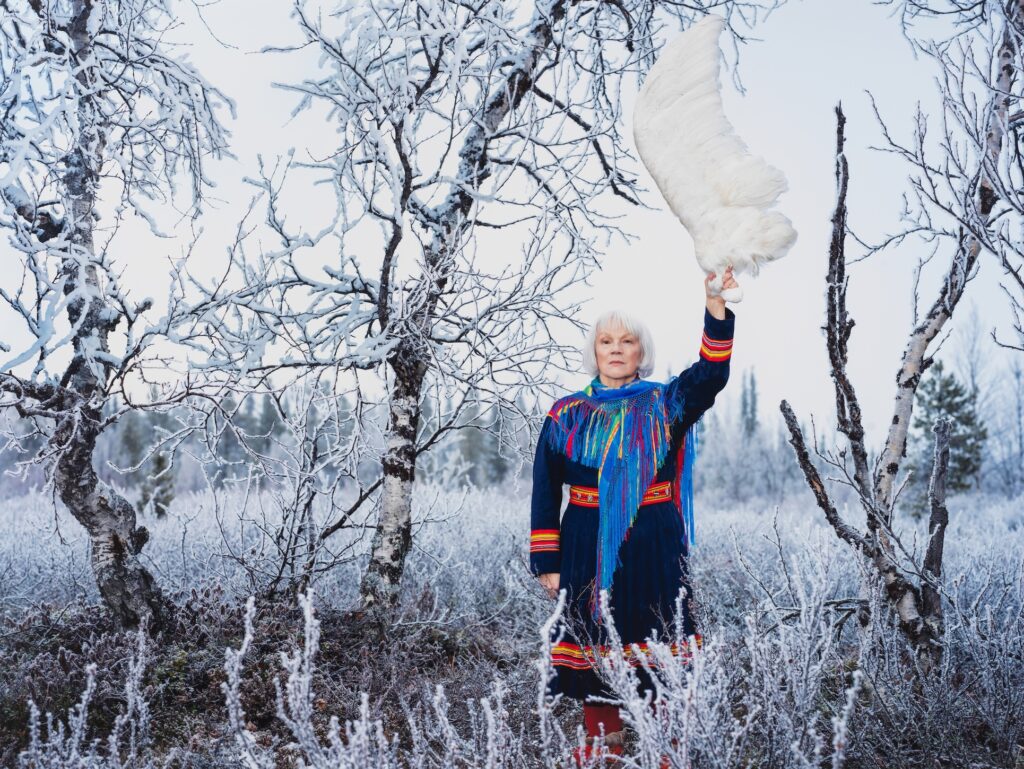
It happened just as she had dreamed: a large herd of reindeer was being driven across a frozen lake when, suddenly, the ice gave way and they plunged through. But after the dream and before it actually happened, Britta Marakatt-Labba (Sweden, b. 1951) had already embroidered the scene in a work titled Fallen Through the Ice. ‘Sometimes you see things very clearly through a dream,’ she recalled.
Born in Sápmi, the northern region spanning Norway, Sweden, Finland, and Russia, traditionally inhabited by the Sámi people, Marakatt-Labba entered the world in a kåta — a traditional Sámi dwelling — during an autumn migration from Norway to Sweden. ‘It must have been hard for my mother to give birth in the mountains,’ she has said. But the Sámi had more to worry about. Marakatt-Labba: ‘We always had to fight. Against religious suppression and state offenses. Against the intrusion of our territory, faith and culture.’ And now, they have to fight against climate change, which affects them closely. Reindeer herding remains a vital livelihood for many Sámi people, but grazing land is disappearing as the seasons shift and the ice grows unreliable.
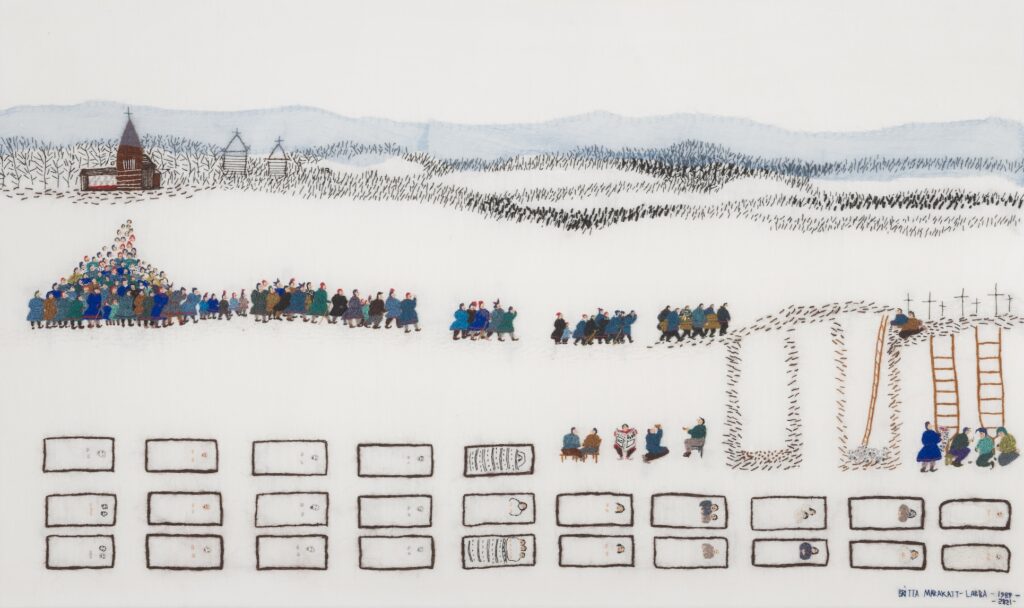
Though Sámi stories are traditionally passed down orally, Marakatt-Labba renders them visible through her intricate embroideries. In her 24-metre-long Historja, she stitches an incredible narrative of Sámi history, culture and everyday life – including their rituals and deities like Madderakka, the goddess of childbirth, and Sáráhkká, the guardian of the home. ‘We only have female gods,’ she noted.
Marakatt-Labba doesn’t make prepatory sketches. She works and edits directly on the fabric. ‘This comes from my heritage,’ she explains. ‘The material leads the way.’ And so does nature: ‘That’s the philosophy of the Sámi. Nature speaks to us, if we’re open to listening. We have always tried to protect it. We don’t own land – we borrow it.’ But around her, she sees increasing destruction, as governments push their own agendas. Still, she insists: ‘You must keep fighting, and believe that change is possible.’
You can read about the exhibition Britta Marakatt-Labba Where Each Stitch Breathes in Moderna Museet in Stockholm here.
